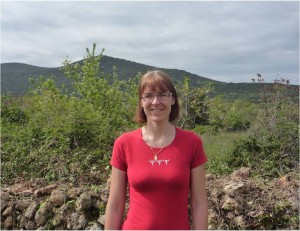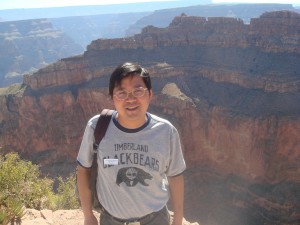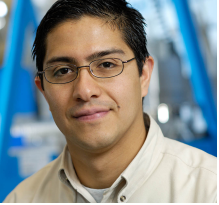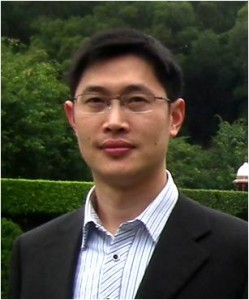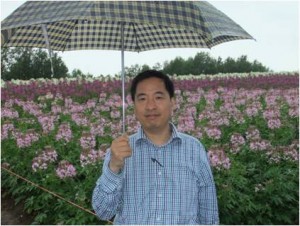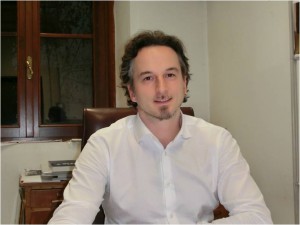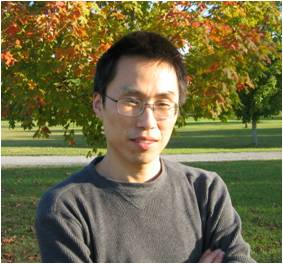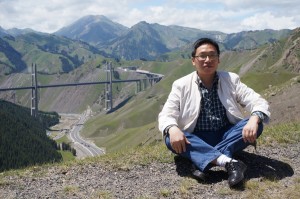 Prof. Chaoyang Wang received his bachelor’s degree in Applied Chemistry in 1995 at the Huazhong University of Science and Technology (Wuhan, China) and his MS degree in Polymer Chemistry and Physics in 1998 at the Changchun Institute of Applied Chemistry, Chinese Academy of Sciences (Changchun, China). He obtained his Ph.D. in Materials Science in 2001 at the South China University of Technology (SCUT, Guangzhou, China). He then joined the Research Institute of Materials Science at this university. From July 2003 to December 2003, he was a Research Associate in Prof. Yi Li’s group at the Hong Kong Polytechnic University. He has been a professor in Polymer Science at SCUT since 2009. He was the winner of the New Century Excellent Talents Supporting Plan from the Ministry of Education of China in 2007. His current research interests include Pickering emulsions; molecular and colloidal self-assembly; soft nanotechnology; nanoscience and nanochemistry; medical controlled release; biomineralization and bioinspired materials; polymer and materials chemistry; physical chemistry and surface chemistry.
Prof. Chaoyang Wang received his bachelor’s degree in Applied Chemistry in 1995 at the Huazhong University of Science and Technology (Wuhan, China) and his MS degree in Polymer Chemistry and Physics in 1998 at the Changchun Institute of Applied Chemistry, Chinese Academy of Sciences (Changchun, China). He obtained his Ph.D. in Materials Science in 2001 at the South China University of Technology (SCUT, Guangzhou, China). He then joined the Research Institute of Materials Science at this university. From July 2003 to December 2003, he was a Research Associate in Prof. Yi Li’s group at the Hong Kong Polytechnic University. He has been a professor in Polymer Science at SCUT since 2009. He was the winner of the New Century Excellent Talents Supporting Plan from the Ministry of Education of China in 2007. His current research interests include Pickering emulsions; molecular and colloidal self-assembly; soft nanotechnology; nanoscience and nanochemistry; medical controlled release; biomineralization and bioinspired materials; polymer and materials chemistry; physical chemistry and surface chemistry.
What was your inspiration in becoming a chemist?
I am gonna say that great interest in chemistry is the origin of my inspiration. I’ve been a chemistry addict since my middle school. And from then on, I immersed myself in the wonderful chemical world and I was so satisfied with every single achievement in scientific research. Finally, I want to thank my Ph.D. supervisor, Prof. Zhen Tong at SCUT, who taught me a lot about polymers.
What was the motivation behind the research in your recent Polymer Chemistry paper (DOI: 10.1039/C3PY00620D) ?
Multicompartmentalization of micro-/nanomaterials has generated significant research interest due to the possibility of simultaneous delivery of multiple components in a single carrier but separated spatially. Compared with simple solid or hollow counterparts, they can meet the key requirement better for some crucial applications in multilevel catalysis, multidrug delivery, multi stimuli-responsive sensors, hierarchical microreactors, energy conversion and storage, and complex cellular mimics. In this article, we have developed a facile approach to successfully produce a novel capsule cluster with a capsule-in-capsule structure by polymerization based on capsule-in-water-in-oil Pickering emulsions. Such capsule clusters can not only encapsulate multiple reactive materials in a single capsule simultaneously, but also protect them from each other and from the environment. The sizes of the inner capsules and clusters, the amount of inner capsules and the ratio of the different inner ingredients can be tuned precisely and independently. The co-encapsulated different inner capsules can act as separate compartments for a synergistic delivery of incompatible actives or chemicals, or as microreactor vessels for biochemical or chemical reactions. The approach presented here provides a new method for the fabrication and application of tunable multi-compartment capsules.
Why did you choose Polymer Chemistry to publish your work?
Polymer Chemistry is one of the most famous journals in the field of polymer science and my research works are well fitted for this great journal. Impact factor is excellent, reviewers’ comments are very helpful and publication is very fast.
In which upcoming conferences may our readers meet you?
I will attend the ninth bilateral Polymer Materials Conference of China and Korea (14-18 July 2013) in Changsha, China. I will speak about the fabrication of capsule clusters, part of which was reported in this article. I will attend the 2013 Chinese Polymer Symposium (12-16 October 2013) in Shanghai, China. I will speak about the fabrication and application of porous polymer materials.
How do you spend your spare time?
In my spare time, I will stay at home or travel to places with my lovely wife and son. Sometimes, I will take my students to go out and do some sports.
Which profession would you choose if you were not a scientist?
It’s hard to say. Maybe I would be a cook. I like cooking. I like delicious foods.
To keep up-to-date with all the latest research, sign-up to our RSS feed or Table of contents alert.












